Mocha vs. Latte: Unpacking the Differences & Brewing the Perfect Cup
If you’ve ever found yourself deciding between a mocha and a latte, you’re not alone. These two beloved espresso-based drinks are often confused due to their creamy texture, but they offer very distinct flavors and compositions.
In this guide, we’ll explore:
-
Mocha vs Latte: What’s the Difference?
-
How to Make Mocha & Latte at Home
-
Which One is Stronger and Healthier?
-
Frequently Asked Questions (FAQ)
Mocha vs. Latte: What’s the Difference?
Mocha and latte are two of the most popular espresso-based drinks, both made with espresso and steamed milk. However, the main difference between the two lies in the addition of chocolate in a mocha, giving it a sweeter, richer taste.
While a latte focuses on the smooth balance between espresso and steamed milk, a mocha blends espresso with chocolate syrup or cocoa powder, creating a fusion of coffee and chocolate flavors. Let’s break down the key differences between mocha and latte.
1. The Basics: Mocha vs. Latte at a Glance
|
Feature |
Mocha |
Latte |
|
Espresso Ratio |
1/3 of the drink |
1/3 of the drink |
|
Milk Ratio |
1/3 steamed milk |
2/3 steamed milk |
|
Chocolate |
Yes (chocolate syrup or cocoa powder) |
No |
|
Foam Ratio |
Light milk foam |
Light milk foam |
|
Texture |
Creamy with a chocolatey touch |
Smooth and velvety |
|
Flavor Profile |
Sweet, rich, and chocolate-infused |
Mild, creamy, slightly milky |
|
Serving Size |
240-300ml (8-10 oz) |
240-300ml (8-10 oz) |
Both drinks are typically served in similar cup sizes, but their flavor complexity and sweetness levels differ.
2. The Origins & Cultural Significance
Mocha: A Coffee with a Chocolate Heritage
The mocha has roots in Yemen, specifically in the ancient port city of Mocha (Al Mokha), which was a crucial hub for coffee trade during the 15th to 18th centuries. Yemeni coffee beans were known for their naturally chocolatey undertones, which contributed to the eventual pairing of coffee with chocolate.
Over time, the mocha evolved into a coffee drink that includes chocolate syrup or cocoa powder, making it one of the sweetest espresso-based beverages today.
Modern mocha variations include:
-
White Mocha – Made with white chocolate instead of regular chocolate.
-
Iced Mocha – A cold version, often blended with ice for a refreshing twist.
-
Peppermint Mocha – A holiday favorite that includes peppermint syrup.
Fun Fact: In Italy, a similar drink called Bicerin (from Turin) layers espresso, drinking chocolate, and milk but is served without mixing the layers.
Latte: The Smooth Italian Classic
The caffè latte (meaning "milk coffee" in Italian) comes from Italy and has been enjoyed for centuries as a morning beverage. Traditionally, lattes were made at home by mixing strong coffee with hot milk rather than using an espresso machine.
The modern latte, prepared with espresso and steamed milk, gained immense popularity in North America during the 20th century, thanks to the café culture boom. Unlike a mocha, a latte emphasizes a smooth, well-balanced coffee flavor without the added sweetness of chocolate.
Popular latte variations include:
-
Vanilla Latte – Infused with vanilla syrup for extra sweetness.
-
Matcha Latte – A green tea alternative made with steamed milk.
-
Pumpkin Spice Latte (PSL) – A seasonal favorite with pumpkin spice flavors.
Fun Fact: In Italy, ordering a "latte" might get you a glass of milk instead of coffee. Always ask for a caffè latte to get the right drink!
3. Taste & Texture Comparison
Both drinks have espresso as their base, but their taste and texture are quite different:
Mocha Taste Profile:
-
Sweet, rich, and chocolatey due to added cocoa or chocolate syrup.
-
Espresso's bitterness is balanced by the chocolate.
-
Often topped with whipped cream or chocolate shavings for extra indulgence.
Latte Taste Profile:
-
Mild, smooth, and creamy due to the higher milk ratio.
-
The espresso flavor is less intense than in a mocha.
-
Ideal for customization with flavored syrups (e.g., vanilla, caramel, hazelnut).
Texture:
-
A mocha is creamier and heavier because of the chocolate addition.
-
A latte is lighter and silkier, with more milk and a gentle foam layer.
Pro Tip: If you love chocolate and coffee together, a mocha is the perfect choice. If you prefer a smoother, milkier coffee experience, go for a latte.
4. Which One Has More Caffeine?
Both mocha and latte use the same amount of espresso, meaning their caffeine content is similar when made with a single shot (~63mg caffeine).
However, mocha may provide a stronger energy boost because chocolate also contains caffeine (albeit in smaller amounts).
|
Drink Type |
Espresso Shots |
Caffeine Content |
|
Mocha (8 oz) |
1 shot + chocolate |
~70-80 mg |
|
Latte (8 oz) |
1 shot |
~63 mg |
|
Mocha (12 oz) |
2 shots + chocolate |
~140-160 mg |
|
Latte (12 oz) |
2 shots |
~126 mg |
If you want a stronger caffeine kick, opt for a double-shot mocha or latte.
Pro Tip: Dark chocolate-based mochas have more caffeine than white mochas because dark chocolate contains more cocoa solids.
5. Which One is Better for Latte Art?
Latte Art: Lattes are better for latte art because they contain more steamed milk and microfoam, making it easier to pour and create designs like hearts, tulips, and rosettas.
Mocha Art: While mocha has foam, the thicker texture of chocolate syrup or cocoa powder can make it harder to achieve detailed latte art. Some baristas, however, use chocolate drizzle or cocoa powder dusting to enhance mocha art.
Pro Tip: If you’re learning latte art, start with a latte before moving on to mochas.
6. Which One Should You Choose?
Choose a Mocha if you:
-
Love chocolate and coffee combined.
-
Prefer a sweeter, creamier drink.
-
Want a bit more caffeine from chocolate.
Choose a Latte if you:
-
Enjoy a smoother, milkier coffee experience.
-
Like to customize flavors with vanilla, caramel, or hazelnut.
-
Prefer a drink that works well for latte art.
Final Thought: Mocha is like a dessert in a cup, while latte is a classic, versatile coffee choice. No matter which one you choose, both are delicious and can be adjusted to suit your personal taste!
How to Make Mocha & Latte at Home
Mocha Recipe
Ingredients:
-
1 shot of espresso
-
120ml steamed milk
-
30ml chocolate syrup or 1 tbsp cocoa powder
-
Whipped cream (optional)
Steps:
-
Brew the espresso using a high-quality espresso machine.
-
Mix chocolate syrup or cocoa powder with the espresso until fully blended.
-
Steam the milk to 60-65°C (140-150°F) and pour over the espresso-chocolate mixture.
-
Top with whipped cream and drizzle extra chocolate syrup if desired.
Latte Recipe
Ingredients:
-
1 shot of espresso
-
180ml steamed milk
-
Light milk foam
Steps:
-
Brew espresso and pour into a large cup.
-
Steam the milk to create a velvety texture.
-
Pour steamed milk slowly over espresso, creating a creamy blend.
-
Add a thin layer of foam on top.
-
Optional: Create latte art using a milk frother.
Which One is Stronger?
-
Mocha has a stronger, sweeter taste due to the chocolate content, making it a more indulgent drink.
-
Latte is smoother and milder, allowing the espresso to shine without added sweetness.
Which One is Healthier?
|
Factor |
Mocha |
Latte |
|
Calories |
~250 (with chocolate) |
~120 (without sugar) |
|
Caffeine |
~80mg (single shot + chocolate) |
~63mg (single shot) |
|
Sugar Content |
Higher |
Lower |
If you’re looking for a lower-calorie, less sweet option, a latte is the healthier choice.
Frequently Asked Questions (FAQ)
Q: Which is better for someone with a sweet tooth?
If you love sweeter coffee drinks, mocha is the better choice. It contains chocolate syrup or cocoa powder, which adds a rich, sweet, and slightly creamy taste that balances the boldness of espresso.
Mocha Sweetness: The chocolate component naturally enhances the sweetness of the drink, making it more indulgent without needing extra sugar. If you prefer an even sweeter mocha, you can add:
-
White chocolate syrup (for a white mocha twist).
-
Caramel or vanilla syrup (for extra depth of flavor).
-
Whipped cream and chocolate drizzle on top.
Latte Sweetness: A latte is milder and less sweet on its own, as it only contains espresso and steamed milk. However, you can make it sweeter by adding flavored syrups like vanilla, hazelnut, or caramel.
Pro Tip: If you want a slightly sweet but less chocolatey option, try a vanilla latte instead of a mocha.
Q: Can I make mocha or latte without an espresso machine?
Yes! While an espresso machine makes the process easier, you can still create mocha and latte-style drinks at home using alternative brewing methods.
For Espresso-Like Coffee:
-
Moka Pot: A stovetop brewer that creates strong, espresso-like coffee with a rich taste.
-
AeroPress: A manual coffee maker that brews a concentrated shot similar to espresso.
-
French Press: Not as strong as espresso but can still create a rich coffee base.
For Frothing Milk Without a Steam Wand:
-
Handheld Milk Frother: A small battery-operated tool that creates foam.
-
French Press Method: Add warm milk to a French press and pump the plunger up and down until foamy.
-
Whisk or Mason Jar: Shake warm milk in a sealed jar or vigorously whisk it until it becomes frothy.
Pro Tip: If you don’t have an espresso machine, a Moka pot + a handheld frother is a great budget-friendly combo for homemade lattes and mochas!
Q: Can I use plant-based milk for these drinks?
Absolutely! Plant-based milk is a great alternative for making both mochas and lattes. However, different milk alternatives work better depending on the drink:
Best for Lattes:
-
Oat Milk: The best option for lattes because it has a naturally creamy texture and foams well, similar to dairy milk.
-
Soy Milk: Also foams well and has a mild, slightly nutty taste.
Best for Mochas:
-
Almond Milk: Pairs well with chocolate flavors, adding a subtle nutty taste.
-
Coconut Milk: Works great in iced mochas, giving a slight tropical flavor.
Other Options:
-
Cashew Milk: Very creamy but doesn’t froth well.
-
Macadamia Milk: Rich and smooth, best for iced versions of these drinks.
Pro Tip: Look for "barista edition" plant-based milk – these are specially formulated to steam and froth better for coffee drinks!
Q: Which drink has more caffeine?
Mocha has slightly more caffeine than a latte due to the caffeine content in chocolate, but the difference is small.
Caffeine Breakdown:
-
A single shot of espresso (used in both drinks) contains ~63mg of caffeine.
-
Mocha contains extra caffeine from cocoa or chocolate syrup, adding around 5-10mg more per serving.
|
Drink Type |
Espresso Shots |
Caffeine Content |
|
Mocha (8 oz) |
1 shot + chocolate |
~70-80 mg |
|
Latte (8 oz) |
1 shot |
~63 mg |
|
Mocha (12 oz) |
2 shots + chocolate |
~140-160 mg |
|
Latte (12 oz) |
2 shots |
~126 mg |
How to Increase Caffeine:
-
Add an extra shot of espresso to either drink.
-
Choose dark chocolate-based mochas since dark chocolate has more caffeine than milk chocolate.
Pro Tip: If you want stronger coffee flavor without extra sweetness, go for a double-shot latte instead of a mocha. If you need an extra energy boost with a sweet kick, mocha is the way to go!
Elevate Your Mocha & Latte with Bazan Coffee
At Bazan Coffee, we believe that a truly indulgent mocha or latte starts with exceptional coffee beans. While chocolate syrup and frothed milk play a role in defining the drink, the quality of the espresso base is what ultimately creates depth, balance, and richness.
Unlike commercial coffee brands that rely on mass production, Bazan Coffee sources premium specialty coffee from Vietnam’s best farms, ensuring that every cup is smooth, aromatic, and full of natural sweetness - perfect for crafting mochas and lattes that rival those from specialty coffeehouses.
The New Revolution: Fine Robusta from Vietnam
For decades, Robusta has been underestimated, often considered a lower-tier coffee compared to Arabica. However, Vietnam’s Fine Robusta is changing the narrative, bringing bold flavors, creamy texture, and natural sweetness to the specialty coffee world.
Why Fine Robusta – Krong Nang?
-
Grown at 650m in Krong Nang, Dak Lak, Vietnam – The perfect altitude and climate enhance the bean’s complexity.
-
72-hour natural anaerobic fermentation – This process reduces bitterness and enhances the coffee’s honeyed, caramelized depth.
-
Taste Notes: Durian, honey, caramel - Perfect for those who love a strong, full-bodied espresso in their cappuccino or latte.
-
Thick crema and low acidity – Ensures a smooth, balanced coffee that pairs beautifully with frothed milk.
For those who love a mocha with deep chocolate undertones or a creamy, strong latte, Fine Robusta - Krong Nang is the ideal choice. Its intense flavor and natural sweetness make it a game-changer in the world of milk-based coffee drinks.
Not Just Robusta – The Best of Both Worlds
For those who prefer a more balanced espresso with fruity and caramel undertones, Bazan Coffee offers a blend that brings together the best of Vietnam’s high-altitude coffee regions.
Special Vietnam Blend: A Harmony of High-Altitude Arabica and Fine Robusta
-
Expertly crafted to combine Arabica’s brightness with Robusta’s richness.
-
Fruity, floral aroma creates a smooth, well-balanced espresso.
-
Versatile and easy to brew - perfect for mochas, lattes, and creamy coffee drinks.
If you enjoy a mellow yet full-flavored coffee with a balanced profile, smooth acidity, and subtle fruitiness, Special Vietnam Blend is an excellent choice for your daily mocha or latte.
Specialty Arabica – Cau Dat: A Refined and Elegant Espresso
For those who appreciate a clean, bright, and layered espresso experience, Specialty Arabica - Cau Dat is a must-try.
-
Grown at 1,550m in Cau Dat, Da Lat - One of Vietnam’s most renowned high-altitude coffee-growing regions.
-
Fully washed processing – Ensures a clean, crisp cup with clear flavor distinctions.
-
Taste Notes: Bell pepper, spices, caramel - A complex espresso that blends beautifully in mochas and lattes.
Arabica lovers who enjoy intricate flavors, bell pepper, spices, caramel notes, and a light yet complex espresso will find Cau Dat Arabica to be a top-tier choice for milk-based drinks.
Which Coffee is Best for Your Mocha or Latte?
-
For a bold, rich espresso base with caramelized sweetness and full-bodied depth → Fine Robusta – Krong Nang
-
For a smooth, well-balanced coffee with fruity and chocolate undertones → Special Vietnam Blend
-
For a refined espresso with bright acidity and complex spice notes → Specialty Arabica – Cau Dat
A mocha or latte is only as good as the coffee you use. Whether you prefer the bold intensity of Fine Robusta, the balanced versatility of Special Vietnam Blend, or the refined elegance of Cau Dat Arabica, Bazan Coffee guarantees a superior coffee experience.
Shop Bazan Coffee today and create the perfect mocha or latte at home.



